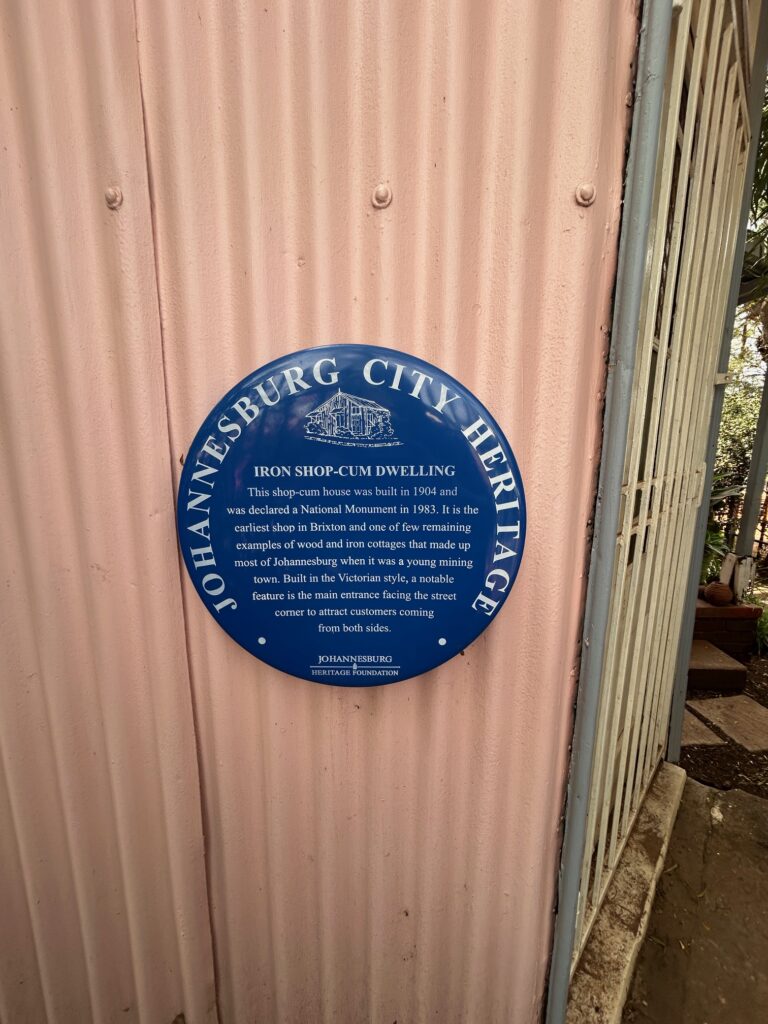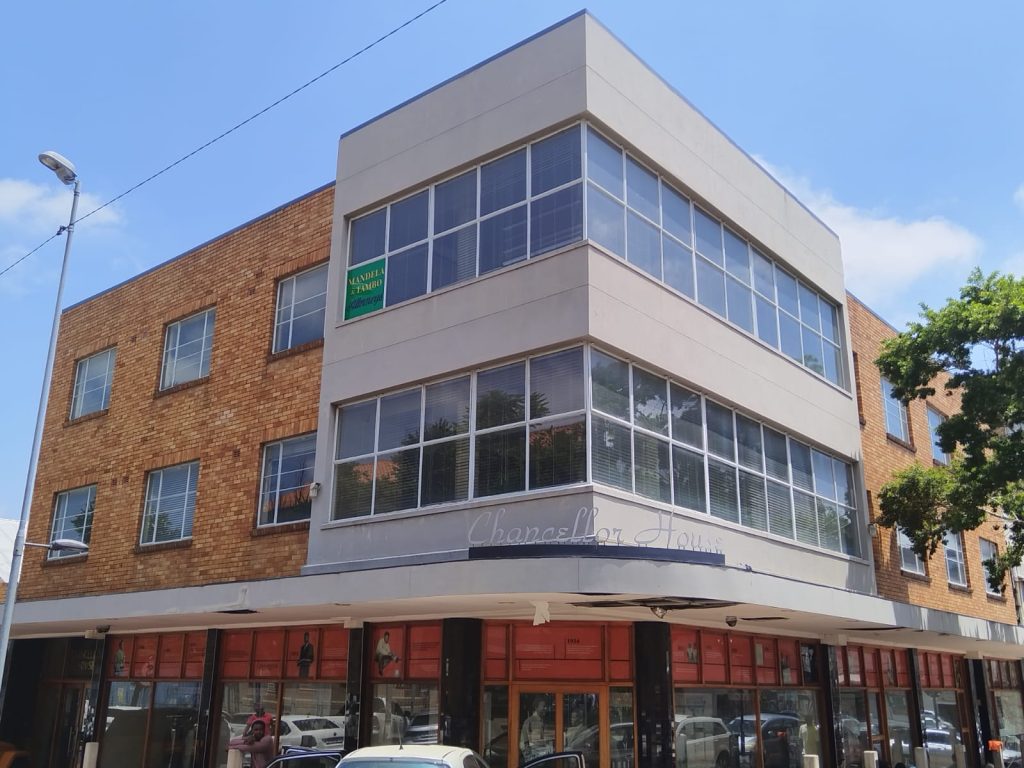The shop-cum-residence has the basic components of Late Victorian architecture. It was orginally a cottage made of wood and corrugated iron. The shop entrance is situated on the corner of the building. The building doubled as a house, which has a major influence on the hierarchy of the spaces. The house with its strict hierarchy now maintains a secondary role. The shop with its necessary functioning spaces such as storage and packing, becomes of primary importance.
The living spaces are situated at the rear of the shop, with the entrance at one side of the building. This entrance door is covered by a small verandah, a feature which attempts to relate with the house. The shop and packing room are situated in the front of the house. The shop entrance is an elegant double door with coloured glass panels. The interior walls and floors are wood, which gives the building a very warm feeling compared with its brick counterparts.
Windows are shaded from the intense highveld solar radiation by means of sloped, corrugated irons panels.
Johannesburg is a city of Gold found on Gold over a century ago. To serve the needs of the people, at gold mines shops were built in the ‘shanty town’ and today, Brixton being one of the earliest suburbs of the city boasts of such structures. One of the earliest shops in the suburb of Brixton happens to be a Late Victorian shop-cum house on Fulham street at No. 143 originally built for Joseph Feinstein. Iron and wood were used to come up with this magnificent structure which was typical of the buildings that characterised early Johannesburg. Built in 1904/5, it is over 100 years old . One of the notable features is the position of the main entrance. Compared with other houses, the shop entrance is situated on the corner of the building which enables the shop to pick up trade from both sides of the building, making the best use of the street structure.
Wood and Iron buildings in this condition are rare in Johannesburg. These materials were cheap and easy to transport, erect, and dismantle. In Johannesburg’s early days, before the railway was connected to the Cape and Natal lines, all materials were transported by ox wagon, with wood and iron being lighter than brick. Although ‘green’ unbaked bricks were manufactured in Johannesburg near the various clay deposits (notably ‘Brickfields’, the area now known as Newtown), these were of a poor quality. Building material shortages and the cost-effectiveness of wood and iron came into focus during periods of upheaval like the Jameson Raid (1897) and the period after the 2nd Anglo Boer War (1899-1902). Also worth noting is that these type buildings were favoured for their portability. Fortune seekers or miners could set-up a temporary house or business and later dismantle their dwelling and move on if fortunes in the area changed, or if the mine expired.
Corrugated iron was the most suitable building material in the early 20th century due to its affordability, weather resistance, and ease of dismantling and transporting by cart. This adaptability was particularly appealing in Johannesburg, a transient society in the mid to late 19th century. During the 1880s, Johannesburg attracted a large population of fortune seekers who initially lived in tented communities. However, the harsh weather conditions and the sustained promise of mineral wealth convinced miners to invest in corrugated iron structures for houses, offices, and shops. These structures were easy to construct, dismantle, and transport, making them inexpensive to acquire and maintain. Originally made from wrought iron and later from mild steel, corrugated iron often came with a hot-dip galvanized finish to prevent rusting (Ball: 2013 Heritage Portal). Mining companies favored this material because it could be easily deconstructed and relocated if a mine's life expired, earning these structures the nickname "miner’s cottages." By the early 20th century, corrugated iron houses were common, with a 1904 census revealing that the Transvaal had 26,367 wood and iron structures. However, by 1921, this number had diminished to 10,000 (Rodd 1989:32). Today, these houses are rare in Johannesburg, with only a few houses, outbuildings, and stables from this period remaining in Turffontein, Brixton, and Lorentzville.
In recent years, the shop has become the family home to Agnes Mmapaulo who acquired it through her previous employer as a pension payout. On paper it belongs to the employer but was donated to Agnes and her family. She resided there with her husband and four children s, one of which performs for the Joburg Ballet.

Brixton Iron house has general protection under the National Heritage Resources Act (NHRA) of 1999. Section 34 of the NHRA provides that:
“No person may alter or demolish any structure or part of a structure which is older than 60 years without a permit issued by the relevant provincial heritage resources authority”.
In 1983 the site was declared a national monument under the National Monuments Act of No.28 of 1969. Section 12 of the National Monuments Act:
“No person shall destroy, damage, excavate, alter, remove from its original site or export from the Republic any monument except under the authority of and in accordance with a permit issued under this section”

A culmination of research gathered over many years, the Online Johannesburg Heritage Register is being launched on Nelson Mandela Day 18 July 2025.
Among the many heritage sites featured is Chancellor House, the downtown offices of Mandela and Tambo Attorneys in the 1950s. After having been vacant and shuttered for more than a decade, this iconic building is being revived and brought to life once again as offices for the Community Development Department, which oversees the City’s Arts, Culture & Heritage Services.